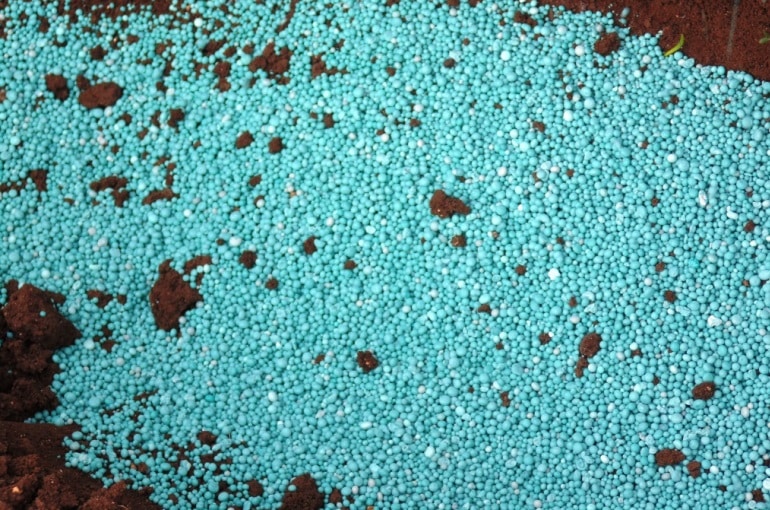Potato Fertilizer Requirements

This post is also available in:
This post is also available in:
![]() Español (Spanish)
Español (Spanish) ![]() Français (French)
Français (French) ![]() Deutsch (German)
Deutsch (German) ![]() Nederlands (Dutch)
Nederlands (Dutch) ![]() हिन्दी (Hindi)
हिन्दी (Hindi) ![]() العربية (Arabic)
العربية (Arabic) ![]() Türkçe (Turkish)
Türkçe (Turkish) ![]() 简体中文 (Chinese (Simplified))
简体中文 (Chinese (Simplified)) ![]() Русский (Russian)
Русский (Russian) ![]() Italiano (Italian)
Italiano (Italian) ![]() Ελληνικά (Greek)
Ελληνικά (Greek) ![]() Português (Portuguese (Brazil))
Português (Portuguese (Brazil)) ![]() Tiếng Việt (Vietnamese)
Tiếng Việt (Vietnamese) ![]() Indonesia (Indonesian)
Indonesia (Indonesian) ![]() polski (Polish)
polski (Polish)
How to fertilize potatoes – Common Potato Fertilizer Programs
First of all, you have to take into consideration the soil condition of your field through semiannual or annual soil testing, before applying any fertilization or tillage method. No two fields are the same, nor can anyone advise you on fertilization methods without taking into account your soil’s test data, tissue analysis and crop history of your field. However, we will list the most common potato fertilization schemes, used by a considerable number of farmers.
Potatoes plants generally require large quantities of nutrients in order to produce an acceptable production. Nowadays farmers make from 0 to 5 fertilizers applications throughout the 3-4 months development of the plants. Most farmers apply a Nitrogen- Phosphorus- Potassium 15-15-15 at the same time with planting (we can add soil fertilizer in most potato planting machines). This applies especially in fields where vegetables have been cultivated during the last six months. The potassium in N-P-K 15-15-15 stimulates growth of strong stems and provides some disease and pest tolerance by increasing the thickness of the outer cell walls.
As a rule of thumb, potato plants have greater needs in Nitrogen (N-P-K 34-0-0) during the first two months (when the foliar part of the plant develops rapidly). From the second month until two weeks before harvest, the plants need more potassium (12-12-17 or 14-7-21) in order to create well shaped potatoes. To these, many farmers often add foliar fertilizer during the second or third month, especially when their potato plants have been diagnosed with micronutrient deficiencies.
A common fertilization scheme involves 4 major fertilization applications, apart from adding well-rotted compost 2 months before planting: 30 days after planting we add 0,2 tons of 20-20-20 per hectare. 55 days from planting, we add 0,5 tons of 14-7-21+2MgO per hectare. 65 days from planting, we add 0,5 tons of 14-7-21+2MgO per hectare. Finally, 80-90 days from planting (depending on the earliness of the variety), we add again 0,5 tons of 14-7-21+2MgO per hectare. Keep in mind that 1 ton = 1000 kg = 2.200 lbs. and 1 hectare = 2,47 acres = 10.000 m2.
Another common fertilization scheme involves 4 major fertilization applications, the first at the same time with planting and the other 3 every 25-28 days. Under this scheme, farmers apply interchangeably 0,5 tons of 12-12-17+2MgO per hectare and 0,5 tons of K2O per hectare.
Finally, some farmers add biostimulators, ie. Substances (mostly foliar) that improve flowering and fruit setting, promote production and help the plants overcome various stress situations.
However, these are just common patterns that should not be followed without making your own research. Every field is different and has different needs. Checking the soil nutrients and pH is vital before applying any fertilization method. You can consult your local licensed agronomist.
You can enrich this article by leaving a comment or photo of your potato fertilization methods.
3.) Growing Potatoes for Profit
4.) Soil Requirements and Preparation for Potato cultivation
5.) Potato Planting, Seeding Rate and Plant Spacing
6.) Potato Fertilizer Requirements
7.) Potato Water Requirements and Irrigation Systems
9.) Potato Harvest, Yield and Storage
Do you have experience in potato cultivation? Please share your experience, methods and practices in the comments below. All the content you add will be soon reviewed by our agronomists. Once approved, it will be added to Wikifarmer.com and it will influence positively thousands of new and experienced farmers across the world.








































































